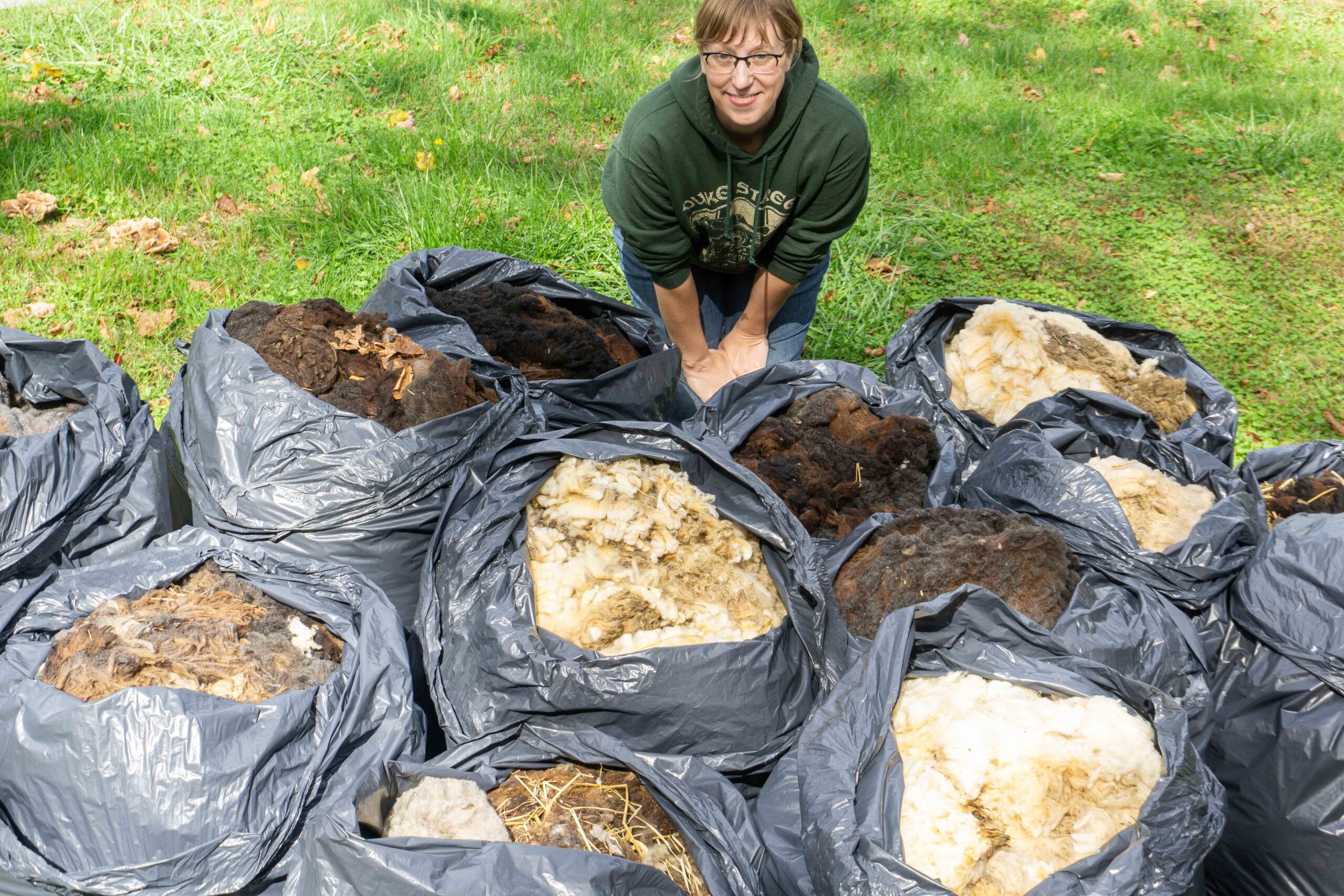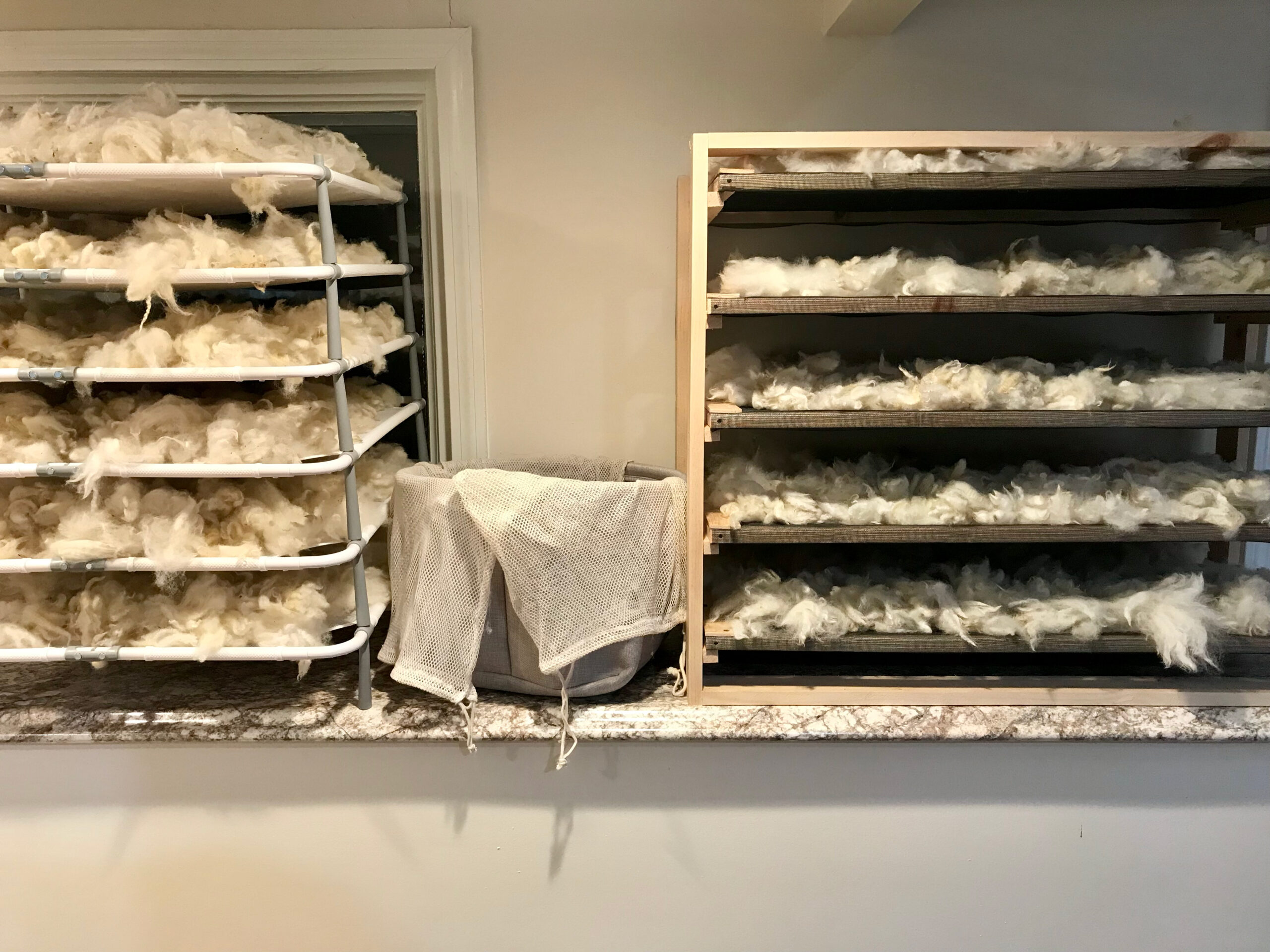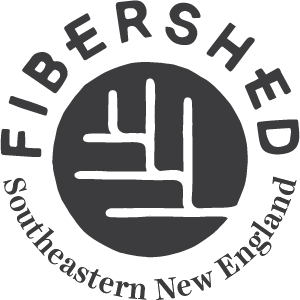
A few weeks ago I gathered a small group of farmers, processors, retailers, supply chain experts and the Connecticut and NY Textile Lab Fibersheds on Zoom to talk waste wool.
We still have so many farmers throwing out their wool! There is such an incredible brain trust out there to tap into, our thoughts were, let’s get a group together to talk about some of Mia’s challenges and opportunities.
Her mission from the call was to:
- Gauge whether/how much of an interest there is among sheep farmers in our region for a market to sell their especially coarse/waste wool.
- Get an understanding from farmers about whether they would be interested in/willing to sell products made from their wool in their farm stores/markets.
- Hear from retailers and regional craftspeople/producers what kinds of non-yarn wool products they/their customers would be interested in.
We had lots of exciting ideas from the small group ranging from the crossover of waste wool + gardening products to fertilizer and felted products farmers could sell at markets. We also talked about the massive need for farmers to think about the marketing and communications needed to sell their wool and how we could help supply them with interns from local design colleges.

A check in with Mia today resulted in this email she said was okay to share with you as is:
“After nearly two years of dreaming and planning, I officially launched Uncommon Strands in October 2021. The idea is to make practical (and attractive!) felted items from upcycled wool. I say ‘upcycled’ because all of the fiber—sourced from farms in the Southeastern New England
and Western Massachusetts Fibersheds—would otherwise not be used to its fullest extent, ending up in the landfill, in compost piles, or somehow discarded.
I’m starting with about 600 pounds of wool, enough to nearly fill one bay of my garage in Worcester, Massachusetts. Skirting that much wool filled several hours of mindless (yet mindful) sorting, with lots of curious looks and questions from my neighbors. I finished skirting just before winter temperatures settled in, and now I’m setting up my basement workshop. After a few plumbing mishaps (many thanks to my husband for his good humor, plumbing skills, and shop vac), I washed my first load of wool in early December. Once the wool dries, I’ll start picking it with a tabletop picker, and will then turn it into batts with a motorized drum carder.
I’ll run the batts through a needle felting machine to create sheets of sturdy felt, which I’ll be able to cut and sew into items like coasters, sponges, laptop sleeves, potholders, and more. Transforming ‘waste’ wool into usable products is a time-consuming process, for sure, but so
worth the work! I’ll keep all of you abreast of my progress over the next several months.
Onward, fiber friends!”
-Mia Lumsden
Have you been thinking of how to help farmers with the wool they are throwing away? Are you a farmer needing advice and connection? Let me help! Email me, Amy DuFault at amytropolis@gmail.com
